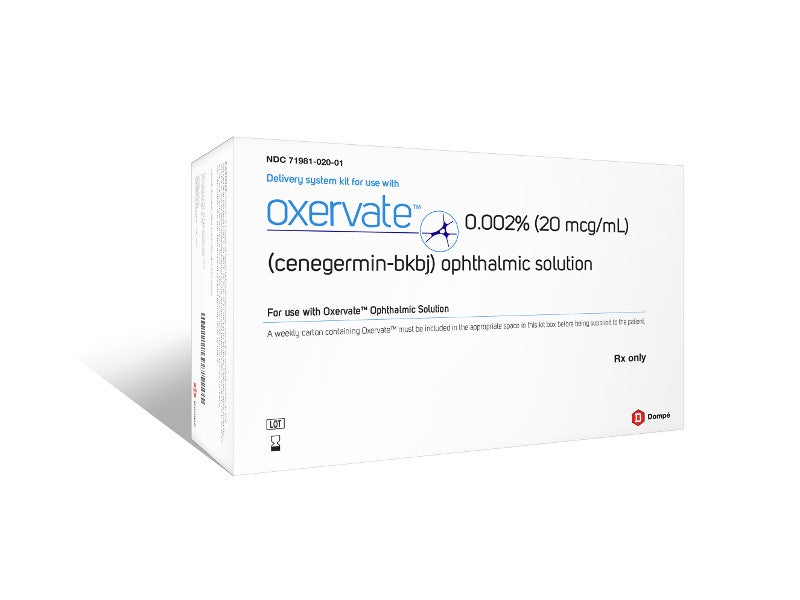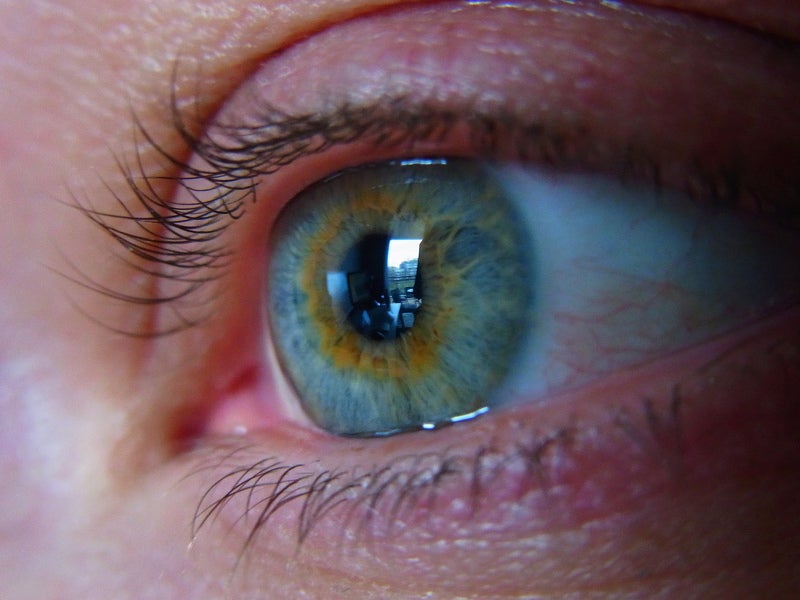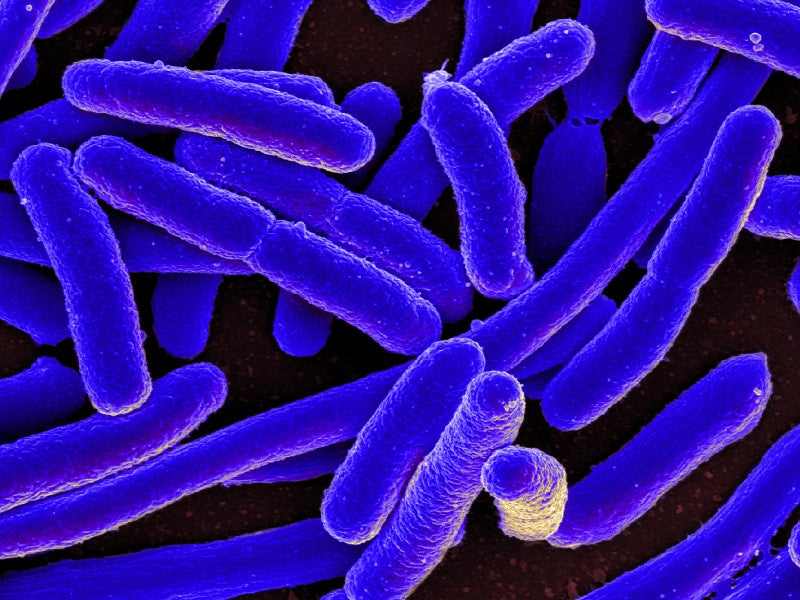Oxervate™ (cenegermin-bkbj) is an ophthalmic solution indicated for the treatment of moderate-to-severe neurotrophic keratitis.
Developed by Dompé, Oxervate was developed using the research findings of Rita Levi Montalcini, an Italian neurophysiologist that received a Nobel Prize in Medicine for the discovery of nerve growth factor.
Oxervate received orphan drug designation in Europe for the treatment of neurotrophic keratitis in 2015. The European Commission (EC) also approved the drug in July 2017.
The drug was also granted orphan drug, fast track, and breakthrough therapy designations by the Food and Drug Administration (FDA). Dompé submitted a biologics license application (BLA) for the drug to the FDA in May 2017. The drug was granted priority review status and then approved by the FDA in August 2018.
Neurotrophic keratitis causes and symptoms
Neurotrophic keratitis is a rare, debilitating eye disease that can lead to corneal scarring and blindness. The disease causes corneal innervation by affecting the fifth cranial (trigeminal) nerve.
Less than five individuals out of 10,000 are affected globally, while less than 65,000 individuals are affected in the US.
The eye-related symptoms of the disease do not appear immediately, which delay the initiation of medical treatments. Some patients report blurred vision, scarring and oedema.
Oxervate’s mechanism of action
Oxervate is a recombinant form of human nerve growth factor, an endogenous protein developed in the body that is crucial for the maintenance, development and survival of neurons.
The drug interacts with specific nerve growth factor receptors located in the anterior segment of the eye and helps repair corneal damage.
Oxervate is available as a clear, colourless sterile ophthalmic solution for topical use and administered as one drop in the affected eye six times per day for eight weeks.
Clinical trials on Oxervate
The FDA’s approval of the drug was based on the positive outcomes of two randomised, multi-centre, double-masked, vehicle-controlled clinical studies named Study NGF0212 (REPARO) and Study NGF0214. The eight-week duration trials enrolled a total of 151 patients.
Study NGF0212 (REPARO) was conducted in Europe and randomised 52 neurotrophic keratitis patients with unilateral disease in each group. Study NGF0214 was conducted in the US and randomised 24 patients with bilateral disease in each group.
After eight-weeks, 72% of the patients treated with Oxervate demonstrated complete healing compared with just 33.3% of the patients in the vehicle group in Study NGF0212.
In Study NGF0214, 65.2% of the patients treated with Oxervate were healed completely compared to 16.7% of those in the vehicle group.
In a long-term follow-up study of REPARO, approximately 80% of the patients that recovered in the eight-week trial period remained disease-free after one year.
The most common adverse events reported in the patients during the clinical trial were eye pain, inflammation, redness and increased lacrimation.






